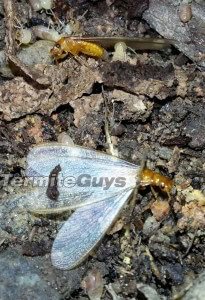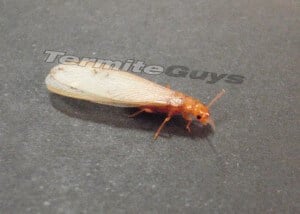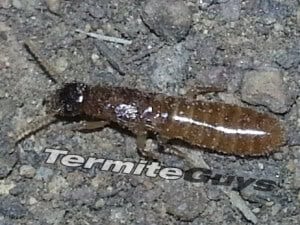Brisbane has recently experienced severe storms, and with the increased rainfall and humidity, flying termite activity has surged across the region. For homeowners, this signals the start of the termite swarming season, when alates—reproductive winged termites—leave their nests to establish new colonies. While these winged insects may seem harmless at first, their presence can pose significant risks to properties, especially if a colony takes root nearby. This guide will explore flying termites‘ behavior, the damage they can cause, and why it’s crucial to consult pest control specialists after spotting these pests in your home.
Flying Termites and Recent Storm Conditions in Brisbane
Termites thrive in warm, humid environments, and the recent storms in Brisbane have created the perfect conditions for termite swarming. During and after heavy rains, termites seek out new areas to establish colonies, often near homes with increased moisture levels. For Brisbane residents, this means that the risk of a termite infestation is heightened, particularly in homes with water leaks or areas prone to dampness.
When the weather conditions are right—high humidity, moisture, and warm temperatures—swarms of flying termites emerge in large numbers. These termites, also called alates, swarm from their existing colonies to find mates and start new nests. Homeowners need to be aware that spotting a termite swarm could be an early sign of trouble.

Swarming Behavior of Alates
Flying termites are most active during Brisbane’s warmer months, typically from November to March. After storms, alates are especially active as the high humidity encourages swarming. These termites are primarily reproductive members of a colony, tasked with establishing new nests. Once they find a suitable spot, such as a damp or decaying area of wood, they shed their wings and mate, forming the foundation of a new colony.
Alates are distinguishable by their long wings, straight antennae, and dark brown bodies. They are often seen flying in swarms near sources of light in homes or around windows and doors, especially at dusk.
The Risks of Flying Termites to Property
The appearance of flying termites near your property should not be taken lightly. While the alates themselves do not cause damage, their presence signals that a mature colony may be nearby. If left unchecked, these termites can infiltrate your home’s wooden structures, including beams, floors, and walls, causing significant damage.
Termites feed on cellulose, which is found in wood, and once they establish a colony, they can rapidly destroy a home’s structural integrity. Over time, this can result in thousands of dollars in repair costs. Homes with moisture issues—especially older Brisbane homes that have experienced water leaks or storm damage—are at a particularly high risk for infestations.
Flying Termites vs. Flying Ants: Common Misidentifications
It’s easy to mistake flying termites for flying ants due to their similar appearance, but it’s important to differentiate between the two:
- Flying termites have straight antennae, equal-length wings, and a thick waist.
- Flying ants, on the other hand, have bent antennae, unequal-length wings, and a narrow waist.
Misidentifying these pests can delay necessary action, allowing termites more time to establish colonies and cause damage. If you’re unsure, it’s always best to consult a pest control specialist for a professional assessment.
Moisture Levels and Property Susceptibility
Storms often leave behind moisture, and termites are attracted to damp environments. Homes that have sustained storm damage, such as leaky roofs, gutters, or cracked foundations, are particularly vulnerable. Termites use these moisture-laden areas as entry points to gain access to your home’s wooden structures.
Here are a few ways moisture can increase your risk of a termite infestation:
- Leaky pipes and roofs: Water leaks in walls or attics create the perfect environment for termites to thrive.
- Poor drainage: Stormwater that accumulates near the foundation of your home can soften wood and invite termites.
- Damp wood: Whether it’s untreated wooden decking, fences, or retaining walls, wet wood is an attractive food source for termites.

Managing Flying Termites in Your Home
Seeing flying termites indoors can be unsettling, especially if they are gathering near light sources such as windows, light bulbs, or lamps. Flying termites are drawn to light, so managing this attraction can help you control their presence temporarily while you seek professional help. Consider turning off unnecessary lights or using outdoor lights strategically to draw termites away from indoor spaces.
However, it’s important to remember that swarming termites are a sign that there may already be a colony close to your property, and turning off lights is a short-term solution. For long-term protection, you need to have a professional termite inspection done to assess the extent of the problem and take necessary action.
The Importance of Consulting a Termite Specialist
When you spot flying termites, it’s crucial to act quickly. A termite specialist can perform a thorough inspection using advanced tools like moisture meters and thermal imaging cameras to detect hidden infestations. Early detection is key to preventing extensive damage to your home.
A licensed termite control expert will also advise on the best treatment options for your situation, whether it’s a chemical barrier to protect your property or a baiting system to eliminate an existing colony. These treatments are essential to safeguard your home against future termite attacks.
Keeping Termite Protection Up to Date
It’s not enough to address a termite problem only when you see flying termites. Ongoing termite management is necessary to ensure your home remains protected year-round. Regular inspections and maintaining termite barriers or baiting systems will reduce the likelihood of future infestations, particularly after severe weather events like storms. Brisbane homeowners should schedule annual termite inspections, especially if they live in high-risk areas or have previously experienced termite issues.
Take Action Against Flying Termites Today
If you’ve noticed flying termites around your home following the recent storms in Brisbane, don’t wait until it’s too late. These pests may be small, but the damage they can cause to your property is immense. Keep your home safe by addressing moisture issues, staying vigilant for signs of termites, and seeking professional pest control assistance.
To protect your home from termite infestations, contact Termite Guys Brisbane at 0447 268 257. Our team of experts will provide a comprehensive inspection and recommend the best termite treatment plan tailored to your property’s needs. Don’t let flying termites take over—act now to safeguard your investment.


